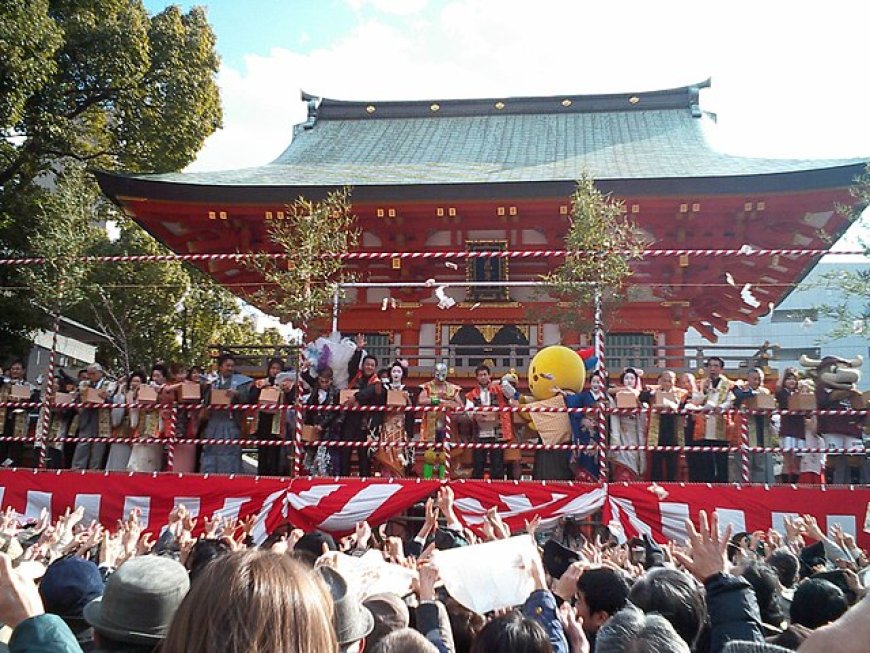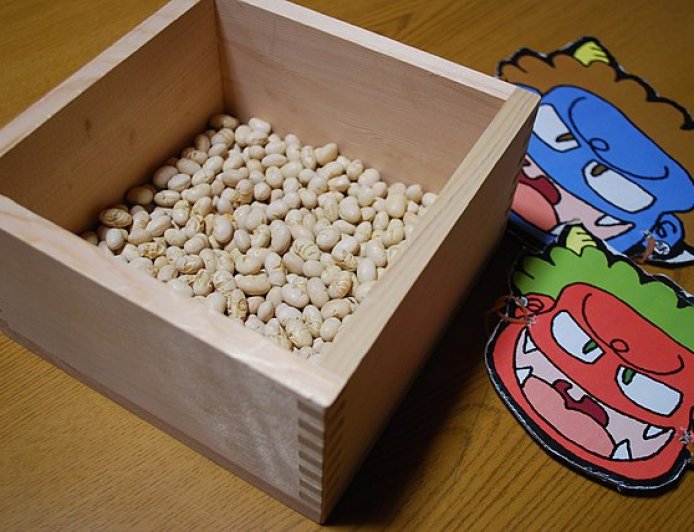Setsubun – Bean-throwing festival in Japan
The Setsubun Japanese Bean Throwing Festival is held in early spring, usually February 3 during the Haru Matsuri Spring Festival.

Like the Lunar New Year celebrated around the world, Setsubun is considered as New Year's Eve. This is the time when people purge the evil spirits that will bring diseases and prevent good luck in the coming year. And what is the devil most afraid of?
The answer is definitely pass.
But not all beans can be used. Roasted soybeans, called fuku mane (happy beans) are thrown out the door or sometimes at a family member wearing a demon mask.
The Setsubun festival is fun and bustling in many cities. Crowds jostle for beans (eating beans is considered good luck) and prizes are thrown from public stages – often hosted by celebrities alongside televised, sponsored events. promote a lot.
As with many other holidays, the bean-throwing ritual that was once done only at home is now commercialized. Shops selling masks and colorfully packaged soybeans are bustling throughout the holiday season.
Is Setsubun a public holiday?
Although Japan's bean-throwing festival is celebrated in many variations throughout the country, it is not recognized as an official holiday.
Along with Golden Week and Emperor's Birthday, Setsubun is considered an important festival in Japan. Many people gather at Buddhist temples and Shinto shrines to pick and throw roasted soybeans. They also visit temples to pray for health and luck after throwing beans at home.
Celebrate Setsubun at home
Setsubun is communally organized, but families can still perform their own mame maki (bean-throwing) tradition at home.
If any male family member has a zodiac sign that coincides with the New Year, they will play the role of the demon who wants to enter the house and cause trouble. If the new year does not coincide with anyone's zodiac sign, this role defaults to the elderly man in the house.
The chosen one will put on a demon mask and try to climb into the house. Then everyone in the house will throw beans at the “demon” and shout “Demons come out lucky come in” seriously. And if there are children in the family, they will probably giggle.
After the "demon" was driven out, people closed the door strongly to drive the devil out of the house and keep the good luck inside. After the ritual is over, children can take their masks and have fun.
Some families choose to go to local temples to join Setsubun in a natural space that is less commercialized. If you go on a Setsubun day trip without a chance to visit a certain family, head to a neighboring temple to enjoy a quieter version of Setsubun. And as usual have fun but don't get in the way of pilgrims as they come here not just to take pictures like you.

Throwing beans in public
Public bean-throwing rituals known as mame maki are performed on Setsubun day with shouts of “oni wa soto!” (the devil comes out!) and “fuku wa uchi!” (happiness enters).
The modern setsubun has evolved into televised, sponsored events featuring sumo wrestlers and celebrities. Candy, money envelopes, and small gifts were also thrown down to entice the crowd to scramble.
Eat Setsubun Beans
Sometimes people also throw peanuts, but traditionally fuku mame (roasted soybeans) is used. As part of the ritual, people eat one bean a year. In many areas, people eat an extra pea to symbolize good health in the new year.
The actual eating of soybeans first started in the Kansai or Kinki area in south-central Japan, however it was later spread throughout the country by shops selling soybeans.
Other Setsubun traditions
Setsubun was once considered New Year's Eve in Japan, celebrating Setsubun Day in Japan dates back to the 1300s. Setsubun spread to Japan as the Chinese tsuina in the 8th century.
Although not as common as throwing beans, some families still carry on the yaikagashi tradition of hanging fish heads and holly leaves in front of the door to ward off bad spirits from entering.
Eho-maki sushi rolls are eaten on Setsubun day to bring good luck. But instead of cutting into small pieces of sushi as usual, they are left whole and eaten in rolls. Cutting sushi during Tet is considered unlucky.
Hot ginger sake is drunk to warm the body and good for health. A stricter old tradition was that members would sit silently facing the lucky direction determined by their zodiac sign for the year.
Older Setsubun traditions include fasting, performing extra religious rites at the temple, and even carrying out implements to prevent evil spirits from pursuing them. Geisha still participate in this tradition by disguised or dressed as men when having customers on Setsubun day.
--------------------------
Injavi.com - Visit in Japan






















































































